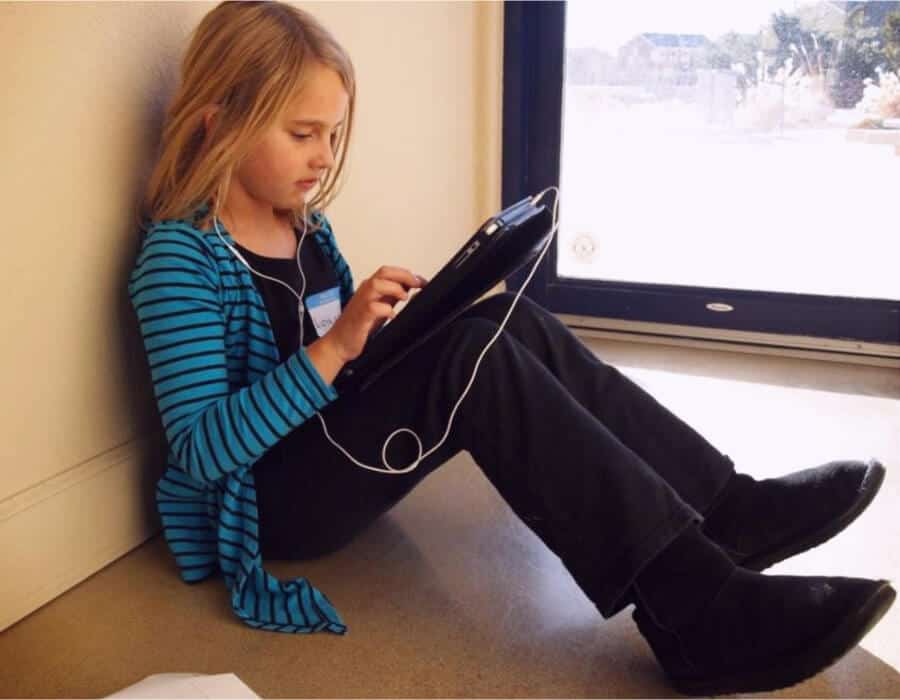Making Screen Time Educational

It is safe to say that the world is now digital.
The smooth, bright, blinking screens of smartphones, tablets, and watches lure us all, along with the myriad of new types of media released every day. It is hard to imagine a time when we didn’t have our lists, our schedules, our newspapers, and of course, our rolodexes all inside of a small rectangular box full of bells and whistles.
With many adults addicted to their devices, it is timely and relevant to ask how safe it is for children, whose brains are still developing, to use digital devices on a regular basis.
Screen Time Guidelines
The American Academy of Pediatrics released new guidelines in October of 2016. They recommended that children 0-18 months should have no screen time.
Parents who want to introduce their 18-24 month old children to digital media should choose high quality programming and watch it alongside their children. Two to five-year-olds should be limited to 1 hour, and children six and older should be limited on a consistent basis according to their parents’ judgment.
Can Screen Time Be Educational?
The AAP’s guidelines make clear that babies are not developmentally ready for screen time and should instead engage in high face time activities with their parents such as reading books or playing with blocks. However, the guidelines give some leeway for parents’ good judgement regarding screen time for older kids.
What, then, is quality screen time?

Dimitri Christakis, a pediatrician and epidemiologist at the University of Washington School of Medicine, gave a very interesting Ted Talk on how the type of media a child is exposed to affects their ability to learn and maintain attention later in life. Basically, a child who has been exposed to very quick, frenetic or violent media on a daily basis has an increased chance of struggling with inattention and difficulty learning later in life.
The conclusion that can be drawn from the AAP guidelines and Dr. Christakis’s findings is that screen time can indeed be educational if it is 1) developmentally appropriate, 2) slower-paced with fewer scene changes, and 3) limited and complemented with abundant face-time experiences.
Screen Time as an Educational Tool
There is no replacement for real-time activities.
Going to a museum, learning to play monopoly, playing hide and seek, having a book read to them, or splashing through a sprinkler are better for your child’s brain development than endless hours of virtual experiences. Still, screen time can be very valuable if you see it as a tool rather than entertainment.
In another Ted Talk by Patricia Kuhl, the Director of the National Science Foundation’s Science of Learning Center, discusses the idea that babies acquire language from face-to-face social interaction, not TV or audio.
A baby does not understand Sesame Street no matter how much the characters talk about numbers or letters. The movement and the colors might stimulate them, but they do not comprehend the content. TV is great at delivering information, but the viewer must be developmentally ready to acquire information through this medium.
A toddler, on the other hand, can watch Sesame Street or Mr. Rogers and learn to count, but only if they have been exposed to a generous amount of social experiences during infancy that prepare them for the information by creating neuronal connections.
Whatever the age, quick scene changes are unrealistic and condition a child’s mind to be bored by real life experiences. Most of life is waiting for something to happen, working towards making something happen, or experiencing joy at a brief moment that has just passed. A child who has not built endurance for the slow-paced movement of real life could have a hard time completing real world tasks.
Screen time, then, should have a deliberate educational intention.
What are your goals for your child? Do you want your toddlers to practice numbers and letters?
Half an hour of Sesame Street in the morning is a good investment of time with this goal in mind. Do you have older kids who need to practice reading or math skills? Half an hour on a reading app like Tumble Books or Epic, or a math fluency app like Reflex Math would do the trick.
Do you want your 6+ year old children to gain experiences coding? Then an hour or so spent solving problems at code.org will help them develop beginning coding skills.
Whatever your goals are, there is a website, an app, or a TV program to achieve that goal.
The important thing is to keep technology in perspective as a tool instead of a way to pass the time.
The future needs individuals with creativity, ingenuity, perseverance, and critical thinking abilities. We have powerful and wonderful devices at our disposal. The combination of virtual and actual reality as a means to help children develop the skills they need not only to survive, but prosper, is necessary. Balance is the key.







Leave a Reply